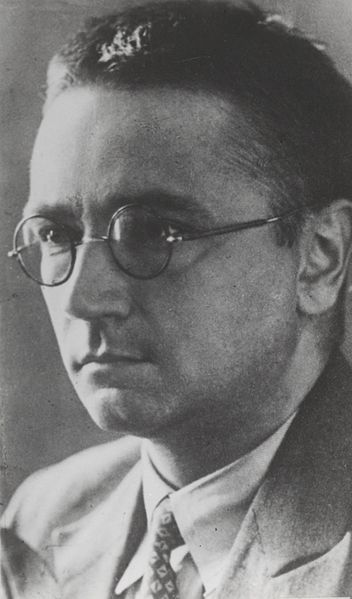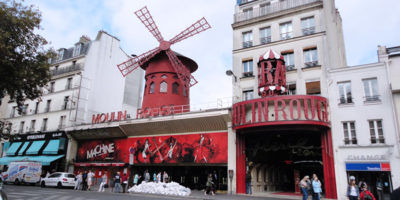
Image by Anefo from Wikimedia
Top 10 Intriguing Facts about Simon Vestdijk
Born on October 17th, 1898 in the small Frisian town of Harlingen, Vestdijk was a Dutch writer who studied medicine in Amsterdam but turned to literature after a few years as a doctor.
He was the son and only child of Simon Vestdijk II, a gymnastics teacher at the HBS, in Harlingen, and the Remonstrant Amsterdam Anna Margaretha Clazina
Vestdijk’s writings were about literature, religion, art, and music. He also wrote poetry and short stories. His work has been translated into most Western European languages.
Here are the top 10 intriguing Facts about Simon Vestdijk
1. He attended Catechism Classes
Vestdijk’s parents took him to catechism classes, not because they were very religious, but because they thought the confrontation with faith was part of the upbringing.
Although Vestdijk spent a considerable time attending the classes, he was less interested in religious matters. He later said he did not even know whether his pastor was a Mennonites or Remonstrant which are two Church different factions of the Dutch Reformed Church.
Remonstrants is a protestant movement that had split from the Dutch Reformed Church in the early 17th Century.
2 . Simon Vestdijk Suffered from Clinical Depression

Photo by Simon Vestdijk sr. from Wikimedia
Vestdijk went to the five-year-old Rijks-HBS school in Leeuwarden, which had 250 students. He worked very hard to be the best in class. In 1916, he suffered from Clinical depression and this made him fall behind in school.
His depression resulted in a blank school report for December 1916 and in February 1917 he suffered another depression, for which he was given opium by an Amsterdam doctor.
3. He Studied Medicine at the University
Vestdijk joined the University of Amsterdam to study medicine in 1917. His first student room was on the fourth floor of Grensstraat 24 near Weesperzijde.
The medical school had one hundred freshmen, thirteen of whom were women. Lectures were given in and around the Oudemanhuispoort and the Mauritskade.
At the university, Vestdijk spent most of his time in the university library which had tens of thousands of books and subscriptions to hundreds of newspapers and magazines.
He later used notes about professors and students from the library as models for characters in his novels.
4. He Worked as a Doctor

Photo Source: Wikimedia
Vestdijk was an acting general practitioner from 1927 to1932. He worked as a ship’s doctor in the years 1929 to1930. As a ship’s doctor, he made a trip to Indonesia which was then the Dutch East Indies where he made his debut in Poetry.
His first poem De Vrije Bladen brought him into contact with Menno ter Braak, who was a Dutch modernist writer, critic, essayist, and journalist, and E.du Perron who was an influential Dutch poet and author of Indo-European descent.
In 1932 he gave up his medical practice and devoted himself entirely to literature. In that year his debut collection Verses was published.
5. Simon Vestdijk was Imprisoned During the War
During World war II, the collection of critiques and essays Mutiny against the Day was censored by the German occupier, and pieces about English-language authors and Kafka had to be deleted.
Vestdijk was imprisoned by the Germans as a hostage in Camp Sint-Michielsgestel and was later transferred to the ‘ Oranjehotel ‘, the Polizeigefängnis in Scheveningen.
He later returned to Sint-Michielsgestel, where he was released after formally registering as a member of the Kultuurkamer.
Kultuurkamer was an institution established by the German occupier during World War II, to which all artists, architects, writers, journalists, musicians, film actors, and stage performers had to be affiliated to be allowed to work.
6. He Took Piano Lessons
Vestdijk took piano lessons with the church organist, pianist, composer, and conductor Willem Zonderland when he played Grieg’s Piano Concerto in A minor.
This composer became a musical hero for life. Vestdijk knew more about music because his father owned a piano.
7. He Lived with his Landlady for over 30 Years

Photo by Rob Bogaerts / Anefo from Wikimedia
Vestdijk lived with Ans Koster who was his landlady and seven years his senior. During that period he had a relationship with Henriëtte van Eyk from 1946 to the early 1950s, with whom he wrote the epistolary novel Avontuur Met Titia.
Henriëtte van Eyk is known as one of the most successful humorous writers in the Netherlands in the 20th Century. She was born into a wealthy Reformed banking family.
In 1965, After the death of Ans Koster and at the age of 67, he married Mieke Adriana Catharina Maria van der, Hoeven. The couple had a son and a daughter Dick and Annemiieke. The marriage ended after five years due to Vesrdijk’s death.
8. Simon Vestdijk Wrote over 200 Books
Vestdijk was the author of over 200 books, making him one of the most famous Dutch writers. His work consists of 24 collections of poetry, 33 collections of essays, 57 novellas and short stories, 52 novels, 2 surviving novel fragments, published correspondence, and many translations.
He also wrote hundreds of articles for daily and weekly newspapers. It cannot be categorized into one particular movement. He saw himself as “a typical romantic writer’s figure.”
Due to his enormous production, the poet Adriaan Roland Holst called him “the man who writes faster than God can read”. The description ‘Devil’s artist’ comes from Menno ter Braak.
9. He was knighted in the Order of Orange-Nassau

Photo by Rob Bogaerts / Anefo from Wikimedia
Before his death on 23rd March 1971, Vestdijk had been awarded almost all Dutch literary prizes. In 1955 Vestdijk was appointed a knight in the Order of Orange-Nassau.
The Order of Orange-Nassau is a civil and military Dutch order of chivalry founded in 1892. It is open to civil or military persons who perform acts of special merit for society.
His work is seen In many towns and villages in the Netherlands, a street was named after VestdijkIn Leeuwarden, a poetry tableau was laid out at a park, the Westerplantation, with the poem ‘Winning Love’.
10. Vestdijk was Nominated for the Nobel Prize in Literature Twelve Times
Vestdijk was long regarded as the main Dutch contender for the Nobel Prize in Literature.
The archive of nominations for the Nobel Prize in Literature at the Swedish Academy shows that from 1950 to 1967, Vestdijk was nominated for the Nobel Prize in literature twelve times.

 English
English










